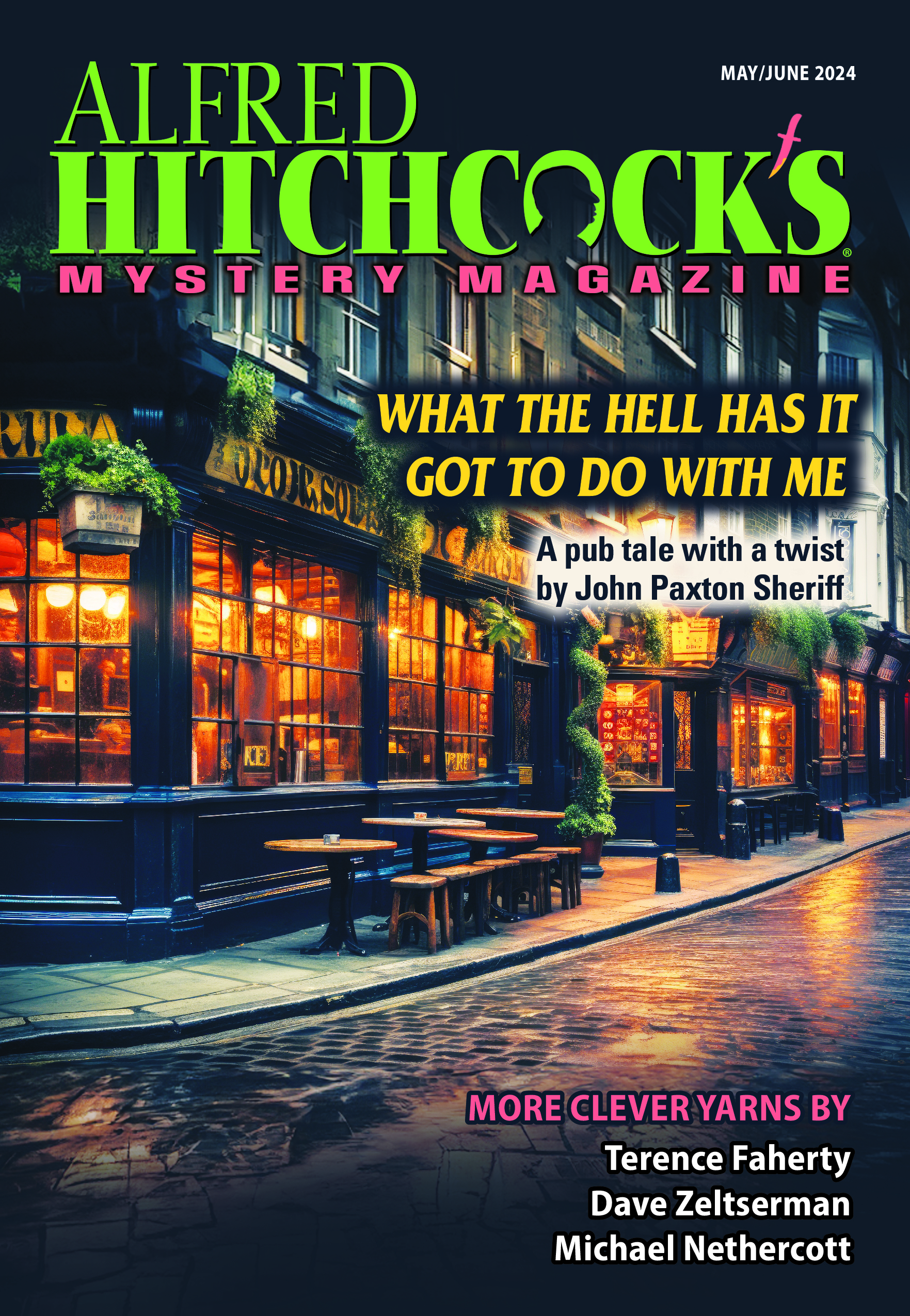Kathy Lynn Emerson/Kaitlyn Dunnett is the author of over fifty books written under several names. She won the Agatha Award for best mystery nonfiction of 2008 and was an Agatha Award finalist in 2015. Currently she writes the contemporary Liss MacCrimmon Mysteries (Kilt at the Highland Games) as Kaitlyn and the historical Mistress Jaffrey Mysteries (Murder in the Merchant’s Hall) as Kathy. Here, she talks about the newest tale in her Lady Appleton series, “Lady Appleton and the Creature of the Night,” in the current issue of AHMM.
I’ve been writing about Lady Appleton and her friends, on and off, for twenty years, ever since she first appeared in Face Down in the Marrow-Bone Pie, published in 1997. In all those novels and short stories, I’ve tried my best to be accurate in my presentation of life in sixteenth-century England. As much as I enjoy reading a good paranormal tale, I’ve been meticulous about sticking to reality when I write historical mysteries.
Until now.
What can I say? The sixteenth century was a superstitious time. Even a rational woman like Lady Appleton would have been unable to explain everything in the world around her. In Face Down Under the Wych Elm, she helped clear a woman of an accusation of witchcraft, knowing full well that some plants are poisonous and require no supernatural assistance to kill. But witches weren’t the only unnatural beings that were real to people of that time. They also believed in pixies, fairies, and ghosts. In Cornwall, it was thought that tommy-knockers lived in mines and gave warning of cave-ins. To prevent the restless dead from walking, suicides (who had committed the crime of self-murder) were supposed to be buried in a public highway between nine and midnight . . . after a stake had been driven into the body. At least in legend, there were creatures who were only half human, or who could change from human to animal.
Back in 2004, I first had the idea to write about a fictional sixteenth-century English family with a dark secret—they were weres. Not werewolves. There were already too many werewolf stories out there. I was thinking of something in the cat family, maybe a lynx or a Scottish wildcat. Unfortunately, I couldn’t come up with a angle that worked. I couldn’t even decide on the decade in which to set the story. One false start (“The King’s Weres”) had members of the Catsby family at the court of Henry VIII early in his reign. Another (“On Little Cat Feet”) let Princess (later Queen) Elizabeth discover their secret and vow to keep it, so long as they would serve her loyally. A separate problem was whether to go all-out paranormal or provide an alternate, rational explanation for everything that happened in my story.
Eventually, “Lady Appleton and the Creature of the Night” began to take shape in my mind. It still took me more than six months to write and when I finished it, I wasn’t sure that anyone would want such an odd little tale. Fortunately, it did find a home. Now I just have to hope that sticklers for historical accuracy will forgive me this little side-trip into the supernatural world, one the Elizabethans believed could exist side by side with their own.


Kathy, I love the notion of were-cats (wish I could be one!) and using the name Catsby was brilliant. Were those the Catsbys of “the cat, the rat and Lovell our dog” or were they fictional?
I do try to use family and given names actually in use in England during the 16th century, but this particular branch of the family is pure fiction. Thanks for asking.
Heidi, the Catsbys were a real family but this branch is fictional I try to use both first and last names that were around during the 16th century, but in any of the Lady Appleton stories and novels almost all the characters are figments of my imagination. Thanks for asking.